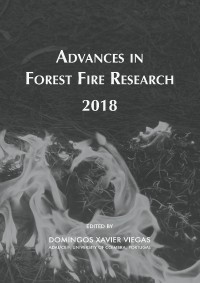Please use this identifier to cite or link to this item:
https://hdl.handle.net/10316.2/44591| DC Field | Value | Language |
|---|---|---|
| dc.contributor.author | Parente, Joana | |
| dc.contributor.author | Pereira, Mário G. | |
| dc.contributor.author | Tonini, Marj | |
| dc.date.accessioned | 2018-11-09T14:28:39Z | |
| dc.date.accessioned | 2020-09-06T17:31:36Z | - |
| dc.date.available | 2018-11-09T14:28:39Z | |
| dc.date.available | 2020-09-06T17:31:36Z | - |
| dc.date.issued | 2018 | - |
| dc.identifier.isbn | 978-989-26-16-506 (PDF) | |
| dc.identifier.uri | https://hdl.handle.net/10316.2/44591 | - |
| dc.description.abstract | In the last decades, Portugal registered substantial land use / land cover changes (LULCC) driven by the abandonment of rural areas, fast urbanization, and expansion of metropolitan areas and costal touristic centers motivated by the significant socio-economic development. Consequently, there significant transitions incurred among different land use classes as well as a homogenization of the fuel bands, increasing the extension and complexity of fire prone areas. Portugal was particularly affected by forest fires (FF) with more than 18,000 FF/year and annual burnt area (BA) of 107,000 ha/year since 1980, while the average size of such events has increased from 4 ha to 13 ha in the last 10 years. This study analysed the FF occurred in continental Portugal between 1990 and 2013, with the main focus on: (i) assess the global and regional differences/similarities in LULCC and fire regime; (ii) evaluating the role of FF on LULCC and; (iii) to provide a better understanding (identification and characterization) of space-time cluster distribution of FF. We used the following datasets: (i) land use/land cover inventories from CORINE; (ii) BA polygons from the Portuguese Institute for the Conservation of Nature and Forests. A geospatial methodological approach, based on GIS analyses, was developed to identify LULCC and to characterize the impact of FFs on these changes; then, cluster analyses were performed to examine patterns in FFs distribution and, finally, to discover how landscape factors control FF clusters. This research provides a quantitative assessment of the relationship between LULCC and FFs in Portugal. The authors believe that the obtained results provide a valuable contribution to: (i) characterize the LULCC in Portugal; (ii) assess the role of FFs on LULCC; (iii) support a better landscape management to reduce related losses of life, property and assets; as well as, (iv) promote educational events to increase public awareness to the causes and consequences of FF. | eng |
| dc.language.iso | eng | - |
| dc.publisher | Imprensa da Universidade de Coimbra | por |
| dc.relation.ispartof | http://hdl.handle.net/10316.2/44517 | por |
| dc.rights | open access | - |
| dc.subject | Land use/Land Cover changes | eng |
| dc.subject | Forest fires | eng |
| dc.subject | Portugal | eng |
| dc.subject | Cluster analysis | eng |
| dc.title | The role of forest fires in land use/land cover changes in Portugal | por |
| dc.type | bookPart | por |
| uc.publication.firstPage | 670 | - |
| uc.publication.lastPage | 676 | - |
| uc.publication.location | Coimbra | por |
| dc.identifier.doi | 10.14195/978-989-26-16-506_74 | - |
| uc.publication.section | Chapter 3 - Fire Management | por |
| uc.publication.digCollection | PB | por |
| uc.publication.orderno | 74 | - |
| uc.publication.area | Ciências da Engenharia e Tecnologias | por |
| uc.publication.bookTitle | Advances in forest fire research 2018 | - |
| uc.publication.manifest | https://dl.uc.pt/json/iiif/10316.2/44591/204251/manifest?manifest=/json/iiif/10316.2/44591/204251/manifest | - |
| uc.publication.thumbnail | https://dl.uc.pt/retrieve/11059207 | - |
| uc.publication.parentItemId | 55072 | - |
| uc.itemId | 68857 | - |
| item.grantfulltext | open | - |
| item.fulltext | With Fulltext | - |
| Appears in Collections: | Advances in forest fire research 2018 | |
Files in This Item:
| File | Description | Size | Format | |
|---|---|---|---|---|
| the_role_of_forest_fires_in_land_use.pdf | 1.18 MB | Adobe PDF |  |
Items in DSpace are protected by copyright, with all rights reserved, unless otherwise indicated.
